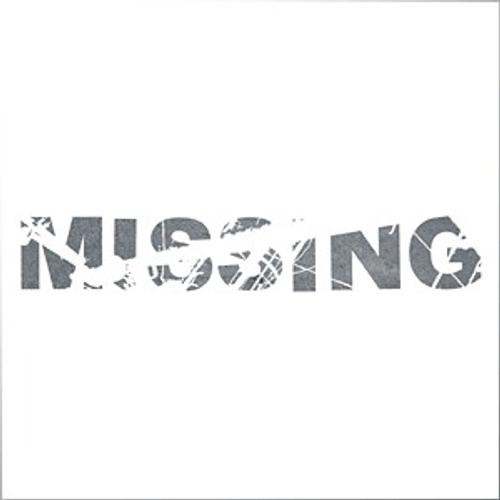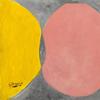Morse Museum Expansion Recalls Grandeur of Louis Comfort Tiffany’s Personal Estate
- WINTER PARK, Florida
- /
- November 23, 2010

New 12,000-square-foot Wing Will Feature Famed Daffodil Terrace and 250 Art Objects and Architectural Elements From and Related to Laurelton Hall.
The Charles Hosmer Morse Museum of American Art, home to the most comprehensive collection of Louis Comfort Tiffany materials in the world, will open a new 12,000-square-foot wing on Feb. 19, 2011. The addition will provide for the first time long-term public access to the recently restored Daffodil Terrace from Tiffany’s celebrated Long Island home, Laurelton Hall and approximately 250 art and architectural objects from or related to the long-lost estate. Highlights include prize-winning leaded-glass windows and iconic Tiffany lamps, as well as art glass and custom furnishings.
The new Laurelton Hall galleries will provide 6,000 square feet of additional public exhibition space and will deepen the Morse’s interpretations of Tiffany’s life and legacy. Laurelton Hall, every room and architectural detail designed and controlled by Tiffany, was destroyed by fire in 1957. The 11 new galleries at the Morse will showcase surviving components of Laurelton Hall’s dining room, living room and reception hall—also known as the Fountain Court—as well as other rooms, creating a uniquely immersive experience.
“The new galleries will suggest aspects of the actual rooms designed and decorated by Tiffany during his lifetime,” said Laurence J. Ruggiero, director of the Morse Museum. “Visitors can no longer go to Laurelton Hall to appreciate Tiffany’s approach to design, but they can come to the Morse and, we hope, gain a more holistic sense of the man, his aesthetic, and the power of his imagination.”
Photographs of interiors from the much-published estate aided the museum’s efforts to suggest the true experience of Laurelton Hall. Working with the Morse Museum’s staff, George Sexton Associates of Washington, D.C., designed the lighting and installations in the museum’s new addition to evoke the essence of Tiffany’s design vision.

Expansion Highlights
The Daffodil Terrace, installed in a new glass-enclosed gallery, will serve as a focal point for the new wing. The 18-by-32-foot outdoor room exemplifies Tiffany’s unique and dramatic style. Supported by eight 11-foot marble columns topped with bouquets of glass daffodils, the terrace’s coffered ceiling is composed of hundreds of stenciled wood elements and molded tiles in three bays. The central bay features a skylight covered by six large panels of iridescent-glass tiles in a pear-tree motif. The terrace, pieced together from more than 600 distinct parts and fragments, is the museum’s most significant conservation project since reassembling Tiffany’s chapel interior from the 1893 World’s Columbian Exposition in Chicago. The conservation team, headed by Griswold Conservation Associates LLC, of Culver City, California, was able to reconstruct the terrace using old black-and-white photographs, historical descriptions and computer technology.
The terrace will be visible from vantage points both inside and outside the museum. Situated with a view of an expanded garden courtyard at the museum, the Daffodil Terrace, for the first time, will be presented in a manner related to its original location at Laurelton Hall.
Highlights from the dining-room installation include: a 13.5-foot-high, mosaic-decorated marble mantelpiece that is one of Tiffany’s most forward-looking designs; a 25-foot-long Oriental rug; a domed leaded-glass chandelier 6.5 feet in diameter; and a suite of six leaded-glass wisteria transoms.

The living room installation showcases four leaded-glass panels depicting the four seasons—each from a single large window from the Tiffany exhibit at the Exposition Universelle in Paris in 1900, for which the artist won a gold medal. Five turtleback-glass hanging lamps suspended from an iron oxbow fixture made to the specifications of Tiffany’s original serve as the focal point for the gallery.
From the art gallery Tiffany built on the estate, the Morse is showing the pair of intricately carved Indian teak doors and half-moon-shaped glass mosaic that graced the entryway. The centerpiece of the mosaic is a peacock-feather-motif window in leaded glass.
Another new gallery will serve as a study room and include accessible copies of books that were in Tiffany’s personal library. Together the art objects and installations work to provide context for understanding Tiffany’s originality and enduring appeal.
Louis Comfort Tiffany’s Laurelton Hall
Laurelton Hall, built between 1902 and 1905 on Long Island, is arguably Tiffany’s greatest work of art. In his 84-room, eight-level mansion, set on almost 600 acres overlooking Cold Spring Harbor and Long Island Sound, Tiffany integrated into one rapturous whole all the passions and preoccupations of his life—color, light, nature and the art of Eastern and Islamic cultures.
After the fire in 1957, Hugh F. McKean and his wife, Jeannette, who together assembled the Morse Museum’s collection, salvaged architectural elements, windows and other objects from the ruins of the estate. Over the next four decades, they continued to search out and collect objects from the estate that earlier had been auctioned, sold or given away. The Morse is the largest single repository of surviving materials from Laurelton Hall.
About the Charles Hosmer Morse Museum of American Art
The museum was founded in 1942 by Jeannette Genius McKean, who was committed to the family tradition of philanthropy begun by her grandfather, Chicago industrialist Charles Hosmer Morse. She and her husband, Hugh F. McKean, built the Morse’s collection over a 50-year period and have provided continued support to the museum as a gift to the community. In 1957, when a fire at Tiffany’s Laurelton Hall estate threatened to destroy his legacy, the McKeans rescued surviving art and architectural objects. Since then, the Morse has been dedicated to preserving and presenting Tiffany’s work in the context of American decorative art and furthering Tiffany scholarship. It is today home to the world’s most comprehensive collection of works by Tiffany. The Morse is owned and operated by the Charles Hosmer Morse Foundation and receives additional support from the Elizabeth Morse Genius Foundation. It receives no public funds.
“Laurelton Hall was Tiffany’s masterpiece, and it housed a self-curated collection of Tiffany Studios’ production,” said Curator and Collection Manager Jennifer Perry Thalheimer. “The objects he put in his home and the way he arranged them reflected his perpetual quest for beauty.”



100x100_c.jpg)












